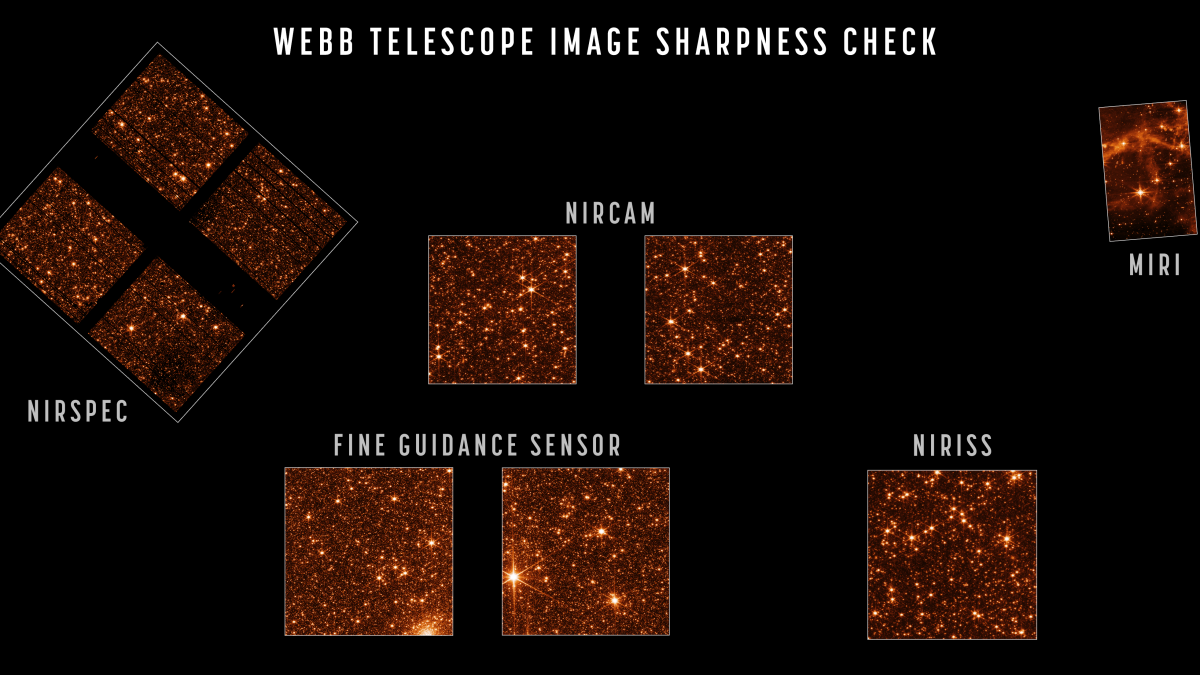Sharp pictures! James Webb Space Telescope completes alignment in huge milestone
The Webb team can now proceed with science instrument commissioning.

NASA's view of deep space just got sharper.
The James Webb Space Telescope finished its alignment phase after demonstrating it can capture "crisp, well-focused images" with all four of its science instruments, the agency announced Wednesday (April 28).
The milestone, which NASA showcased with some new Webb images, allows the mission team to proceed with science instrument commissioning. The telescope will thus enter a new phase of preparation after several months of mirror and instrument alignments. This next step will take roughly two months, with Webb remaining on track to finish in June if everything goes to plan.
"These images have profoundly changed the way I see the universe," Scott Acton, Webb wavefront sensing and controls scientist at Ball Aerospace, said in the NASA statement. "We are surrounded by a symphony of creation; there are galaxies everywhere. It is my hope that everyone in the world can see them."
Live updates: NASA's James Webb Space Telescope mission
Related: How the James Webb Space Telescope works in pictures
It's been a busy time for the $10 billion telescope since its launch on Dec. 25, 2021. First, Webb had to rocket to deep space, a process that took almost a month, and then it had a complex, seven-step alignment process to get through. Each milestone has gone pretty much to plan, with only minor tweaks required along the way.
A week ago, Webb officials reported that the 18 hexagonal segments of the scope's primary mirror were almost completely cooled to the deep-space temperatures they require to see objects sharply in infrared light. Now the mirrors appear to be ready, as they are sending "fully focused light" into every instrument, which in turn is rendering images.
Get the Space.com Newsletter
Breaking space news, the latest updates on rocket launches, skywatching events and more!
"The optical performance of the telescope continues to be better than the engineering team's most optimistic predictions," NASA officials said in the statement, noting that the image quality is only "diffraction limited." (That means the only obstacle to seeing fine detail is the size of the telescope, rather than a problem with its performance.) From here on, the agency added, mirror alignments will need only minor adjustments.
The next phase of work will include science instrument commissioning, along with telescope calibration. Instrument commissioning requires lenses, masks, filters and other equipment to work properly in different configurations, to make sure they can perform science work.
As for calibration activities, there's a list of milestones that Webb will need to hit before it is declared operational.
"The telescope will be commanded to point to different areas in the sky, where the total amount of solar radiation hitting the observatory will vary to confirm thermal stability when changing targets," NASA officials said of the calibration.
"Furthermore, ongoing maintenance observations every two days will monitor the mirror alignment and, when needed, apply corrections to keep the mirrors in their aligned locations," they added.
Follow Elizabeth Howell on Twitter @howellspace. Follow us on Twitter @Spacedotcom and on Facebook.
Join our Space Forums to keep talking space on the latest missions, night sky and more! And if you have a news tip, correction or comment, let us know at: community@space.com.

Elizabeth Howell (she/her), Ph.D., was a staff writer in the spaceflight channel between 2022 and 2024 specializing in Canadian space news. She was contributing writer for Space.com for 10 years from 2012 to 2024. Elizabeth's reporting includes multiple exclusives with the White House, leading world coverage about a lost-and-found space tomato on the International Space Station, witnessing five human spaceflight launches on two continents, flying parabolic, working inside a spacesuit, and participating in a simulated Mars mission. Her latest book, "Why Am I Taller?" (ECW Press, 2022) is co-written with astronaut Dave Williams.









